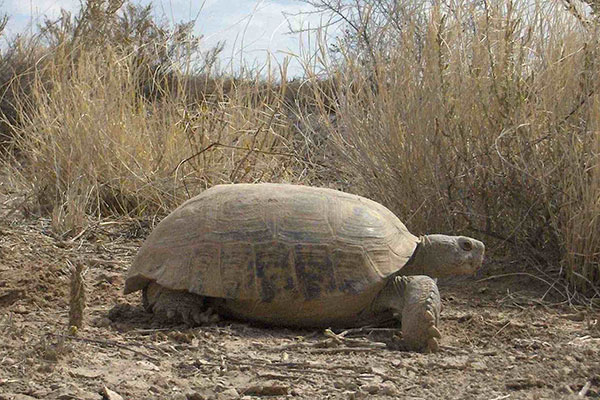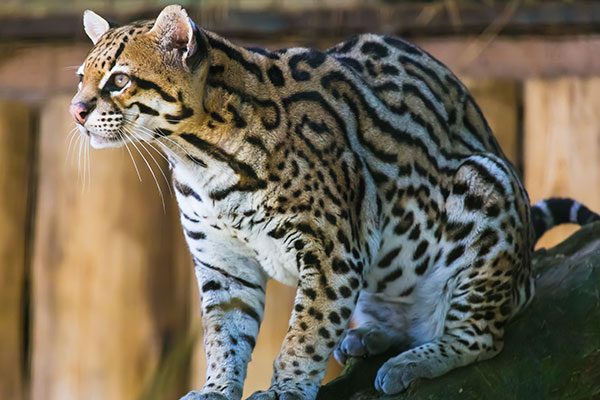International trade bans on endangered species generally help mammals improve their status but hurt reptiles, finds a major economics study led by Emory University.
Science Advances published the research on the impact of international trade bans by the Convention on International Trade in Endangered Species of Wild Fauna and Flora (CITES).
“We find large spikes in legal trade in anticipation of the bans on reptilian species but not in anticipation of the bans on mammalian species, potentially explaining the differential effect of the bans,” says Hugo Mialon, professor of economics at Emory University and lead author of the study.
The work is the largest-scale study of its kind, spanning nearly four decades and including all mammalian and reptilian species for which threat-level assessments are available from the International Union for the Conservation of Nature (IUCN).
Co-authors include economists Tilman Klumpp, from the University of Alberta, Canada; and Michael Williams, from the Berkeley Research Group and Competition Economics LLC in Emeryville, California.
Their findings have significant implications for policymakers. Since CITES does not operate in secrecy, increased trading activity in anticipation of impending trading bans is generally not preventable.
“Anticipatory trade spikes may be especially detrimental when the bans are applied to critically endangered species, because market prices for the few remaining specimens tend to be high, so eleventh-hour trading may be more intense and post-ban recovery harder,” Mialon says. “This suggests that trade bans should be implemented at lower endangerment levels — in other words, when a species is near threatened rather than critically endangered.”
The authors propose several possible explanations for why eleventh-hour trade spikes did not occur — or were less pronounced — for mammalian species. One possibility is logistics, since many of the mammalian species in their dataset were many times larger and heavier than most of the reptilian species, requiring greater effort to ship across international borders. In addition, many of the reptilian species, such as turtles and tortoises, are easier to catch than the mammals. Finally, reptilian species traded in the exotic pet trade are known to be less likely to survive physical relocation compared to mammals.

The Bolson tortoise, the largest of North American tortoise species, lives in the Chihuahuan Desert in Mexico and is listed as "critically endangered" by the IUCN.
Mbtrap, via Wikipedia
Mialon specializes in research at the boundaries between law and economics.
“From a young age, I’ve been fascinated by wild animals and their importance to ecosystems,” he says. “The available IUCN data on endangered species and CITES bans offered a chance to apply my expertise to potentially help save animal species from extinction. As far as I know, we are the first economists to tackle this topic.”
Direct evidence for the effectiveness of trade bans by CITES has been inconclusive. Several previous small-sample studies have found that CITES regulations had a marginal effect, or no measurable effect, on endangerment.
Mialon and his colleagues took a more comprehensive approach to the question. They focused on the period starting in 1979, when data on CITES bans first became available, to 2018. Their analysis included all 41 mammalian and 20 reptilian species that have received CITES bans within the study period and the thousands of mammalian and reptilian species that have been assessed by IUCN during that period.
The status of a majority of species has deteriorated over the past four decades, due to various threats such as hunting, habitat loss and climate change. The statistical methods used by the researchers compared how the status of species that received CITES trade bans changed compared to those that did not receive bans.
Economic controls used in the study included data on GPD per capita, international trade volume as a percentage of GDP, and population density, by country and year. For each species and year, the researchers averaged each of these variables over all countries in the species’ distribution, as recorded by the IUCN. They also constructed a measure for scientific interest in a species. And the analysis controlled for factors that differ across species but do not change over time, such as a species’ average adult size.

The ocelot is among the mammals whose status improved after a trade ban. The wild cat is native to the southwestern United States, Mexico, Central and South America and parts of the Caribbean.
Joao Carlos Medau, Wikipedia
The results indicate that, on average, trade bans work for mammals. A trade ban is associated with an average reduction in the probability that a species is assessed as endangered or worse of up to 17 percent, relative to species in which trade was not banned.
Mammalian species whose status eventually improved following a ban include the Guadalupe fur seal, the grey wolf, the northern bottle-nose whale, the ocelot, the margay, the sloth bear, the Samoan flying fox, the Pacific flying fox, Cuvier's gazelle and the slender-horned gazelle.
“The Cuvier’s gazelle and the slender-horned gazelle are clear examples,” Mialon says. “They were endangered in 2007 when they received a CITES ban and are ‘vulnerable’ and no longer ‘endangered’ today.”
The Dorcas gazelle, however, which did not receive a CITES ban, was “vulnerable” in 2007 and remains “vulnerable” today, so it saw no improvement in status.
“All three species are closely related, share a similar geographic distribution, and face overlapping threats,” Mialon says. “This provides an example of the trade bans working and may suggest that extending a trade ban to the Dorcas gazelle could be effective, too.”
In the case of reptiles, the analysis found that an international trade ban is associated with an average increase in the probability that a species is assessed as endangered or worse of up to 42.6 percent, relative to species in which trade was not banned.
Only the American and saltwater crocodiles saw their status improve following a CITES ban. The Bolson tortoise, Simony’s lizard, the bog turtle, Kleinmann’s tortoise, the Antsingy leaf chameleon, the flat-tailed tortoise, the spider tortoise and the big-headed turtle all saw their status deteriorate following the ban.
One limitation to the study is that historical data on the use of other conservation measures besides CITES bans was unavailable so it could not be used as a control variable. Another limitation is that the analysis only looked at international bans.
“Many threatened animal species are not traded in international markets but are still traded in local and national markets,” Mialon says.
Mialon and his colleagues are currently working on another paper about the effects of CITES international trade bans on plant species.
The research received support from Competition Economics LLC and the Social Sciences and Humanities Research Council of Canada.

